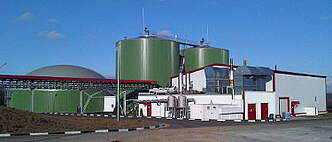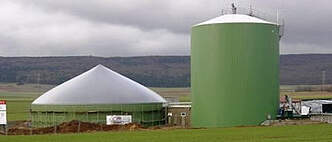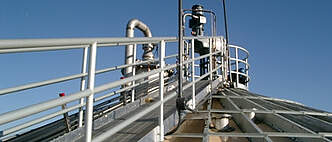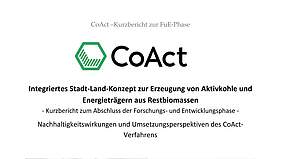In cooperation with the Bodensee-Stiftung (Lake Constance Foundation) and other project partners, Krieg & Fischer Ingenieure GmbH has been involved since 2018 in the development of a process for converting residual biomass that has hardly been used to date, such as leaves or landscape management material, into usable energy. After three years of research and development, the overall coordinator University of Kassel has now published a report on the interim status of the research and development phase, summarizing the most important results and findings.
The goal:
"CoAct pursues the goal of converting residual biomasses available in Friedrichshafen and in the Lake Constance district into an energy carrier and activated carbon. The project will develop innovative governance arrangements that will facilitate the reconciliation of interests and the long-term coordination of relevant urban-rural actors"
The key to the solution lies in the IFBB process (Integrated Solid Fuel and Biogas Production from Biomass): The maceration process washes out substances that interfere with the pyrolysis process. The mash is pressed off. While the solid fraction is processed into activated carbon, the liquid fraction can be used in the digestion tower of the wastewater treatment plant or in a biogas plant for biogas production. The planning of this area is the task of Krieg & Fischer Ingenieure GmbH.
The realization:
Andreas Krieg developed variants for processing technology in 2020. The aim is to develop a starting material for the production of activated carbon that is as free of pollutants as possible. Various biomasses such as landscape grass, roadside greenery, pomace, straw, organic waste, etc. form the basis for this.
As the report points out, the investigations have been successfully completed:
"The elimination efficiencies achieved by the CoAct activated carbon are definitely in the range of commercially available activated carbons. Thus, the CoAct technology concept can contribute both to the substitution of conventional activated carbons and to sustainable water protection."
The outlook:
"Based on the very positive results in terms of performance of the generated activated carbons and the life cycle assessment of the CoAct technology concept, the approach is considered to have a high degree of feasibility for implementation in practice, provided that its economic viability can be demonstrated in the further course of the project. However, the CoAct technology concept is a combination of very innovative processes that have so far only been investigated on a laboratory scale during the R&D phase. Therefore, in order to perform a validation of the results under practical conditions, further pilot-scale investigations are required during the implementation phase."
Further information:
CoAct -Short report on the R&D phase



